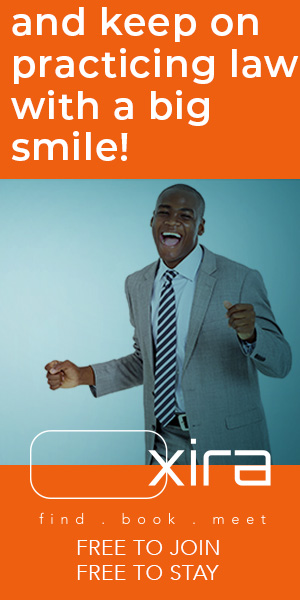
Ed. note: This is the fifth post in a series.
In our last article, we focused on crafting a compelling Ethics CLE — one that goes beyond compliance to spark real conversation and reflection.
Now, we zoom out. Because whether you’re teaching ethics, litigation trends, or emerging tech, every CLE you present is more than just a teaching moment. It’s a positioning moment. A well-delivered CLE doesn’t just check a box — it leaves an impression.
When you treat your CLE like an asset instead of an obligation, it can quietly reshape how you’re perceived inside your firm, with clients, and across the industry. Whether you’re trying to raise your internal profile, attract clients, or carve out your lane in a crowded practice area, your CLE is a strategic opportunity disguised as a slide deck.
In our previous articles, we covered the tactical: How to design a program, bring humor into dry topics, and create audience interaction that doesn’t feel forced. But this piece is about the long game — and how a great CLE can accelerate your career.
CLEs as Career Capital
Every time you speak on a topic, you reinforce your brand. You build credibility. And you signal that you’re someone who knows their stuff and isn’t afraid to claim space.
Most attorneys don’t see it this way — they treat CLEs like a compliance chore. Which is why, when you take it seriously, you stand out.
Here are four ways your CLE can work harder for your career:
1. Visibility and Recognition
Presenting a CLE — especially on emerging or high-stakes topics — puts your name in circulation. It gives colleagues, peers, and potential clients a reason to remember you. If you’re clear and compelling, word travels. Suddenly you’re being invited to speak on panels, contribute to white papers, or participate in client briefings.
These are not random perks. They’re signals that you’re becoming a recognized voice in your field.
Tip: Record your CLE and repurpose it. Turn it into a blog post, a LinkedIn series, or even a client-facing lunch & learn.
2. Networking With Intent
Most attorneys show up, present, and disappear. Don’t do that. Stick around. Answer questions. Ask attendees what resonated. These informal touchpoints are gold. You’ll often meet potential clients, allies in other practice groups, or future collaborators.
Tip: If it’s an internal CLE, follow up with one or two people afterward. Ask them what they’re seeing with clients and offer to compare notes. It deepens the relationship and keeps your name top of mind.
3. Demonstrating Real Expertise
A CLE forces you to organize your thinking — and then perform it. That’s valuable. The attorneys who get tapped for high-profile clients or leadership roles are often the ones who can articulate ideas clearly and confidently under pressure.
If you’re trying to shift into a new area of law or elevate your internal role, a CLE can be the fastest way to show what you know without having to pitch yourself. You’re showing, not telling.
4. Client Development (Without the Cringe)
Let’s be honest — most lawyers hate selling. But sharing valuable content through a CLE doesn’t feel like selling. It feels like helping. When done right, it positions you as generous, smart, and up to date.
Clients take note of that. Especially when you’re solving a problem they’re quietly trying to figure out. I’ve seen attorneys land major matters simply because a GC remembered something they said during a CLE.
Tip: Choose topics that matter to your ideal clients — not just what’s trending. And don’t bury the lead. Tell them what the risk is and how to navigate it.
Turning a CLE Into Long-Term Leverage
A single CLE can become a career accelerant if you treat it like an asset, not a one-off. Think of it as a platform — not just a presentation.
• Record it. Clip highlights for your LinkedIn.
• Rewrite it into client alerts or internal training modules.
• Use it as a launchpad for deeper conversations with existing clients.
• Pitch it to bar associations or invite-only roundtables.
What starts as a 60-minute talk can turn into months of content and dozens of door-opening conversations — if you let it.
What’s Your Topic?
Start by asking yourself:
• What am I known for?
• What do I want to be known for?
• What do my clients (or future clients) ask about most?
The overlap is where your next CLE lives.

Sejal Bhasker Patel is a Rainmaking Consultant and Author of Rainmaker: Unleashed — a sharp, strategic playbook for attorneys who don’t fit the traditional mold. She’s the founder of Sage Ivy, a consulting firm that works directly with law firms and attorneys to turn relationships into revenue — without selling their soul. Her work is blunt, tailored, and built on one core belief: Authenticity isn’t a liability — it’s your strongest competitive edge.
www.sageivyconsulting.com
The post Building A Successful CLE: Leveraging Your Program For Career Advancement appeared first on Above the Law.

Ed. note: This is the fifth post in a series.
In our last article, we focused on crafting a compelling Ethics CLE — one that goes beyond compliance to spark real conversation and reflection.
Now, we zoom out. Because whether you’re teaching ethics, litigation trends, or emerging tech, every CLE you present is more than just a teaching moment. It’s a positioning moment. A well-delivered CLE doesn’t just check a box — it leaves an impression.
When you treat your CLE like an asset instead of an obligation, it can quietly reshape how you’re perceived inside your firm, with clients, and across the industry. Whether you’re trying to raise your internal profile, attract clients, or carve out your lane in a crowded practice area, your CLE is a strategic opportunity disguised as a slide deck.
In our previous articles, we covered the tactical: How to design a program, bring humor into dry topics, and create audience interaction that doesn’t feel forced. But this piece is about the long game — and how a great CLE can accelerate your career.
CLEs as Career Capital
Every time you speak on a topic, you reinforce your brand. You build credibility. And you signal that you’re someone who knows their stuff and isn’t afraid to claim space.
Most attorneys don’t see it this way — they treat CLEs like a compliance chore. Which is why, when you take it seriously, you stand out.
Here are four ways your CLE can work harder for your career:
1. Visibility and Recognition
Presenting a CLE — especially on emerging or high-stakes topics — puts your name in circulation. It gives colleagues, peers, and potential clients a reason to remember you. If you’re clear and compelling, word travels. Suddenly you’re being invited to speak on panels, contribute to white papers, or participate in client briefings.
These are not random perks. They’re signals that you’re becoming a recognized voice in your field.
Tip: Record your CLE and repurpose it. Turn it into a blog post, a LinkedIn series, or even a client-facing lunch & learn.
2. Networking With Intent
Most attorneys show up, present, and disappear. Don’t do that. Stick around. Answer questions. Ask attendees what resonated. These informal touchpoints are gold. You’ll often meet potential clients, allies in other practice groups, or future collaborators.
Tip: If it’s an internal CLE, follow up with one or two people afterward. Ask them what they’re seeing with clients and offer to compare notes. It deepens the relationship and keeps your name top of mind.
3. Demonstrating Real Expertise
A CLE forces you to organize your thinking — and then perform it. That’s valuable. The attorneys who get tapped for high-profile clients or leadership roles are often the ones who can articulate ideas clearly and confidently under pressure.
If you’re trying to shift into a new area of law or elevate your internal role, a CLE can be the fastest way to show what you know without having to pitch yourself. You’re showing, not telling.
4. Client Development (Without the Cringe)
Let’s be honest — most lawyers hate selling. But sharing valuable content through a CLE doesn’t feel like selling. It feels like helping. When done right, it positions you as generous, smart, and up to date.
Clients take note of that. Especially when you’re solving a problem they’re quietly trying to figure out. I’ve seen attorneys land major matters simply because a GC remembered something they said during a CLE.
Tip: Choose topics that matter to your ideal clients — not just what’s trending. And don’t bury the lead. Tell them what the risk is and how to navigate it.
Turning a CLE Into Long-Term Leverage
A single CLE can become a career accelerant if you treat it like an asset, not a one-off. Think of it as a platform — not just a presentation.
• Record it. Clip highlights for your LinkedIn.
• Rewrite it into client alerts or internal training modules.
• Use it as a launchpad for deeper conversations with existing clients.
• Pitch it to bar associations or invite-only roundtables.
What starts as a 60-minute talk can turn into months of content and dozens of door-opening conversations — if you let it.
What’s Your Topic?
Start by asking yourself:
• What am I known for?
• What do I want to be known for?
• What do my clients (or future clients) ask about most?
The overlap is where your next CLE lives.

Sejal Bhasker Patel is a Rainmaking Consultant and Author of Rainmaker: Unleashed — a sharp, strategic playbook for attorneys who don’t fit the traditional mold. She’s the founder of Sage Ivy, a consulting firm that works directly with law firms and attorneys to turn relationships into revenue — without selling their soul. Her work is blunt, tailored, and built on one core belief: Authenticity isn’t a liability — it’s your strongest competitive edge.
www.sageivyconsulting.com
The post Building A Successful CLE: Leveraging Your Program For Career Advancement appeared first on Above the Law.



